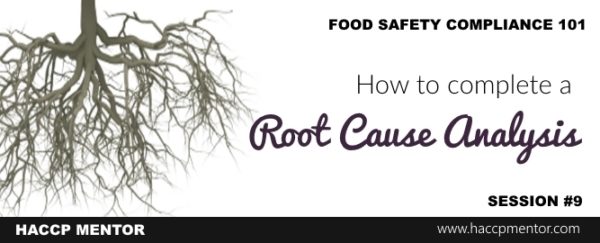Have you ever heard of Murphy’s law? If not, it basically states that anything that can go wrong, will go wrong! With this in mind, it is imperative that your food business has corrective action procedures in place. In this post, I dive into the what, how, when and why of corrective action procedures.
What is a corrective action procedure?
Let’s start with the basics in looking at ‘what is a corrective action procedure’. A corrective action procedure documents what you or your food business will do if an issue is identified.
Elements of a corrective action procedure
The overall purpose of your corrective action procedures should be to prevent contaminated food from entering the marketplace, both at wholesale and retail level.
- With this in mind, your corrective action procedures should include (at a minimum):
- A list of known and potential issues that could occur in your food business
- How these issues can be or will be identified and investigated
- How you will immediately correct any issues that are identified
- How you will ensure that the issue does not recur
- What you will do about any affected food
- How you will prevent any affected food from entering commerce
- How will you record any corrective actions taken
- How will you review any corrective actions taken
- How you will train your food handlers in these procedures
Customer Requirements
If you are required to have and type of third-party certification like SQF, BRC, FSSC22000 or other GFSI standards, you will find that there is a need for corrective action procedures to be developed, documented and implemented. You can refer to your relevant standard for exact requirements.
Do you need training in Corrective Action procedures? Click here to find out how.
FSMA Requirements Summary
The requirement for corrective action procedures is regulated in the USA. This generally* means that any business manufacturing food in the USA or any business that exports food to the USA needs to comply. An excerpt of the regulation is provided below:
§117.150 Corrective actions and corrections
(1) You must establish and implement written corrective action procedures that must be taken if preventive controls are not properly implemented, including procedures to address, as appropriate:
(i) The presence of a pathogen or appropriate indicator organism in a ready-to-eat product detected as a result of product testing conducted in accordance with §117.165(a)(2); and
(ii) The presence of an environmental pathogen or appropriate indicator organism detected through the environmental monitoring conducted in accordance with §117.165(a)(3).
(2) The corrective action procedures must describe the steps to be taken to ensure that:
(i) Appropriate action is taken to identify and correct a problem that has occurred with implementation of a preventive control;
(ii) Appropriate action is taken, when necessary, to reduce the likelihood that the problem will recur;
(iii) All affected food is evaluated for safety; and
(iv) All affected food is prevented from entering into commerce, if you cannot ensure that the affected food is not adulterated under section 402 of the Federal Food, Drug, and Cosmetic Act or misbranded under section 403(w) of the Federal Food, Drug, and Cosmetic Act.
Note:
*For further clarification on your individual compliance obligations, please refer to “Title 21, Chapter I, Subchapter B, Part 117, Subpart C – Hazard Analysis and Risk-Based Preventive Controls, §117.150 Corrective actions and corrections”. To view this reference, please click here.
Are your current corrective action procedures effective?
Making sure that you have adequate procedures documented is half the battle when it comes to compliance. If you would like to know how to write effective corrective action procedures for your food business, join my online training by clicking here. This training provides you with the knowledge, tools and guidance to help you achieve compliance success.



Congratulations for your marriage! I hope you you will have the most happiest life! Good luck!
Slavica
Thanks Slavica 🙂